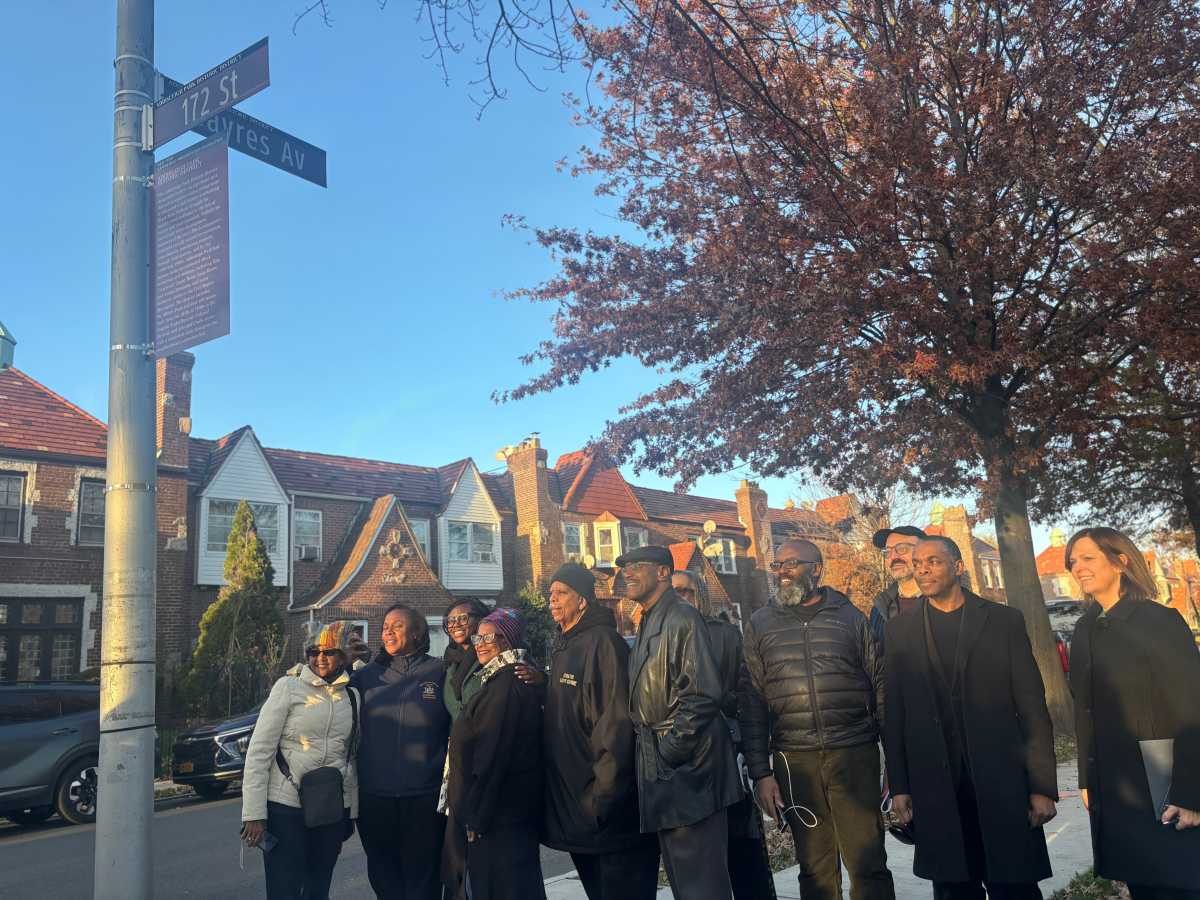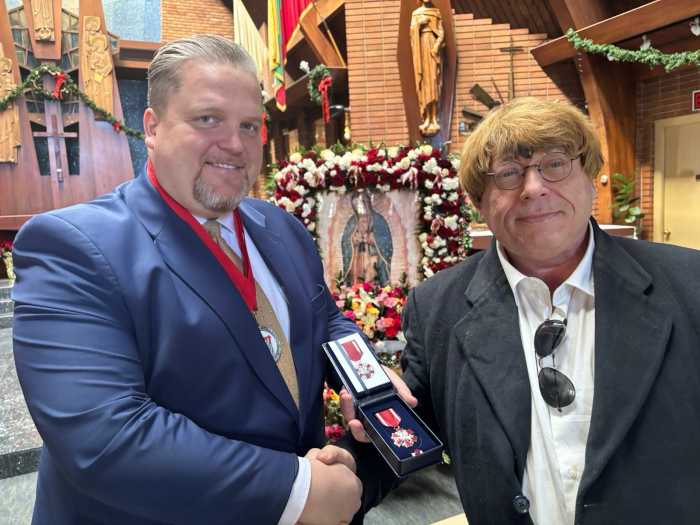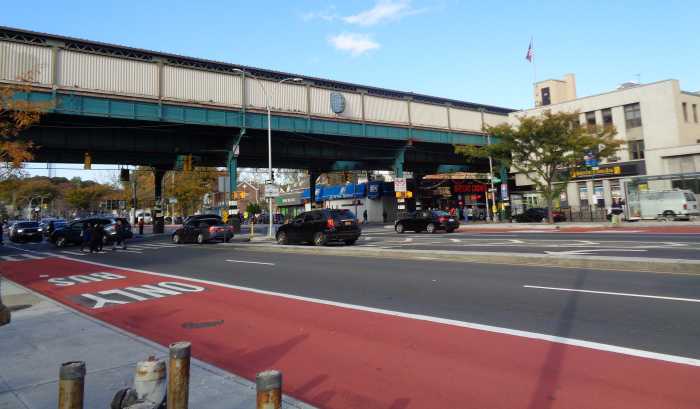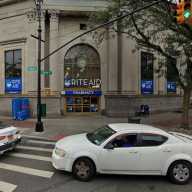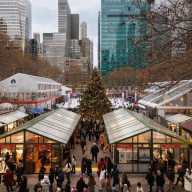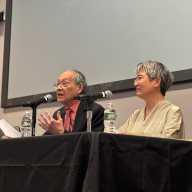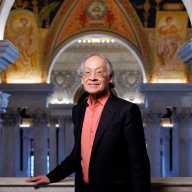New historic markers were unveiled at five signposts in the Addisleigh Park Historic District, near Archie Spigner Park, in an ongoing effort to preserve the character of the historic neighborhood.
The community has long been a staple in Black history, producing many prominent African American public figures, business leaders, athletes, musicians and artists. Notable figures include Ella Fitzgerald, William James “Count” Basie, Lena Horne, Thomas “Fats” Waller, James Brown, Jackie Robinson and Joe Louis.
A ceremony celebrating the historic markers was hosted by the Addisleigh Park Civic Association and New York Landmarks Preservation Foundation, the latter of which sponsored the markers, at the corner of Sayres Avenue and 172nd Street on Nov. 24. In attendance were community leaders, members of the civic association and NYC Landmarks Preservation Commission, and public officials including State Sen. Leroy Comrie, Assemblywoman Alicia Hyndman and Councilwoman Nantasha Williams.
Lisa Kersavage, executive director of the LPC, opened the ceremony with a short speech expressing the importance of preserving the district and the history that lies within its borders.
“Addisleigh Park began as a place that first excluded, but later became someplace extraordinary for the African American community,” Kersavage said. “I want to congratulate everyone who has been part of preserving this important historic district.”
A member of the LPC’s research department delivered a reading of the marker text just before officials pulled a string and uncovered a 19-by-36-inch terra cotta-colored historical marker that reads the following:
“The Addisleigh Park Historic District, designated in 2011, is significant as a distinctive enclave with a strong sense of place and a rich history symbolizing Black New Yorkers’ struggle for equality and resilience in the face of racism and discrimination. Initially an exclusively white development, members of the city’s Black community bypassed racially restrictive covenants, sometimes by purchasing property through third parties. By the 1940s and 1950s, Addisleigh Park had become home to celebrated Black musicians and athletes, including Ella Fitzgerald, Count Basie, Lena Horne, and Jackie Robinson, and many residents active in the Civil Rights Movement. The district includes St. Albans Park and over 400 homes built from the 1910s to 1930s in the English Tudor Revival, Colonial Revival, and Arts and Crafts styles with a consistent scale that gives the neighborhood a suburban feel.”
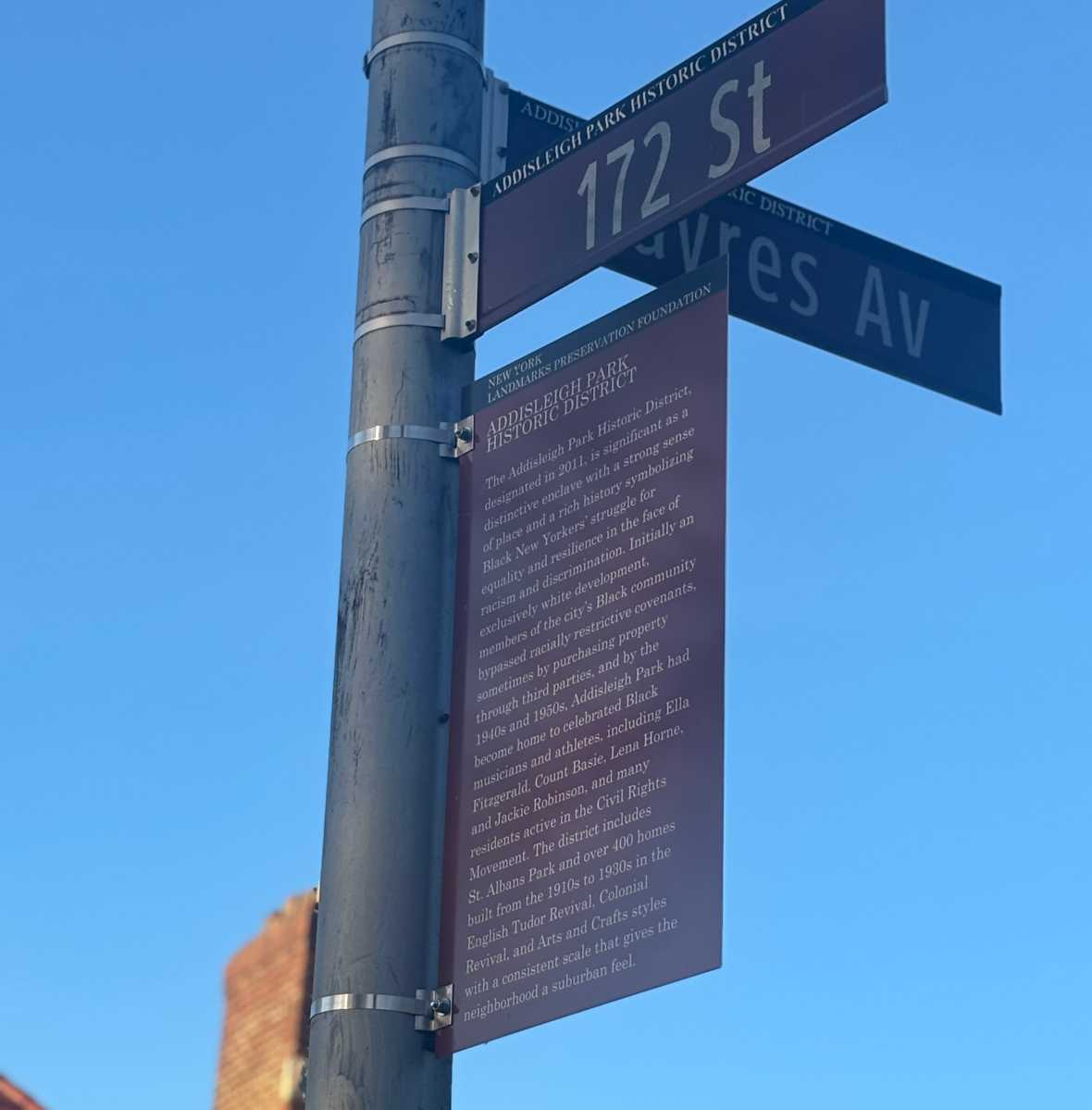
According a news release from the preservation commission, the marker installation is part of the NYLPF’s Historic District Marker Program, which fosters public awareness and civic pride in designated historic districts in the five boroughs. The markers are produced and installed by the NYC Department of Transportation, the news release said.
Frampton Tolbert, director of the Historic Districts Council, said the council has been working with the civic association since 2006, initially conducting cultural resource surveys. The council spoke with neighbors who gave their own oral histories, which supported the historical significance of the community and helped it attain its status as a historical district in 2011.
“We have fantastic homes unlike anywhere else in Queens,” Tolbert said during the ceremony. “This neighborhood really needs to be preserved.”
In 2023, the HDC named Addisleigh Park as a “Six to Celebrate” awardee. The annual listing recognizes neighborhoods in New York City which the council will prioritize preservation. Since the park was named an awardee two years ago, the HDC has provided resources to adjust its zoning to protect the historic character of the neighborhood.
In addition, Tolbert said, two fellows from HDC helped Addisleigh Park get listed on the National Register of Historic Places a few months ago, which means homeowners will be eligible for historic tax credits to do work on their homes. He said in April, the council will host a community meeting to help residents apply for the credits.
Addisleigh Park and the surrounding streets began as a white community, with the first 422 homes built between the 1910s-30s. Sales of homes to African Americans was prohibited in the community well through the 1940s.
However, in 1948, the U.S. Supreme Court ruled that covenants that prevented sales of homes to African Americans was unconstitutional. By 1952, the community became an enclave for African American residents. Since then, the African American community has shaped its history and become a centerpiece of the community’s development and culture.
Addisleigh Park Civic Association historian Lisa Wade said her family moved to the community in 1966 when homes still didn’t have signs advertising they were for sale, recalling that her father instead relied on word-of-mouth.
In recent years, Wade said, Addisleigh Park’s character and beauty has come under threat of a looming battery farm and an increase in accessory-dwelling units that will change the landscape and density of the community.
“People fought to get their homes here,” Wade said. “It’s so important to preserve legacies. This community means everything to me and everyone here, and we have to protect it.”
Comrie credited the civic association, which he said is the most active civic group in Southeast Queens, for its work to install the historic markers. He said Addisleigh Park was built by proud people who valued community and family values, and current residents continue to do so today.
“I’m proud to be here today,” said state Sen. Leroy Comrie, who spoke during the ceremony. “It’s important that we pass on our history… It’s good that we have this opportunity to put up these lines so anyone driving by can understand that this is a historic area that is maintained and will continue to be supported by the community.”
According to Assemblywoman Alicia Hyndman, Addisleigh Park demonstrates the endurance of the African American community, which overcame systemic hurdles and built a thriving community.
“Just think, over 100 years ago, we couldn’t buy a home here,” Hyndman said to attendees. “But one thing I can tell you about Black people is we persevere.”
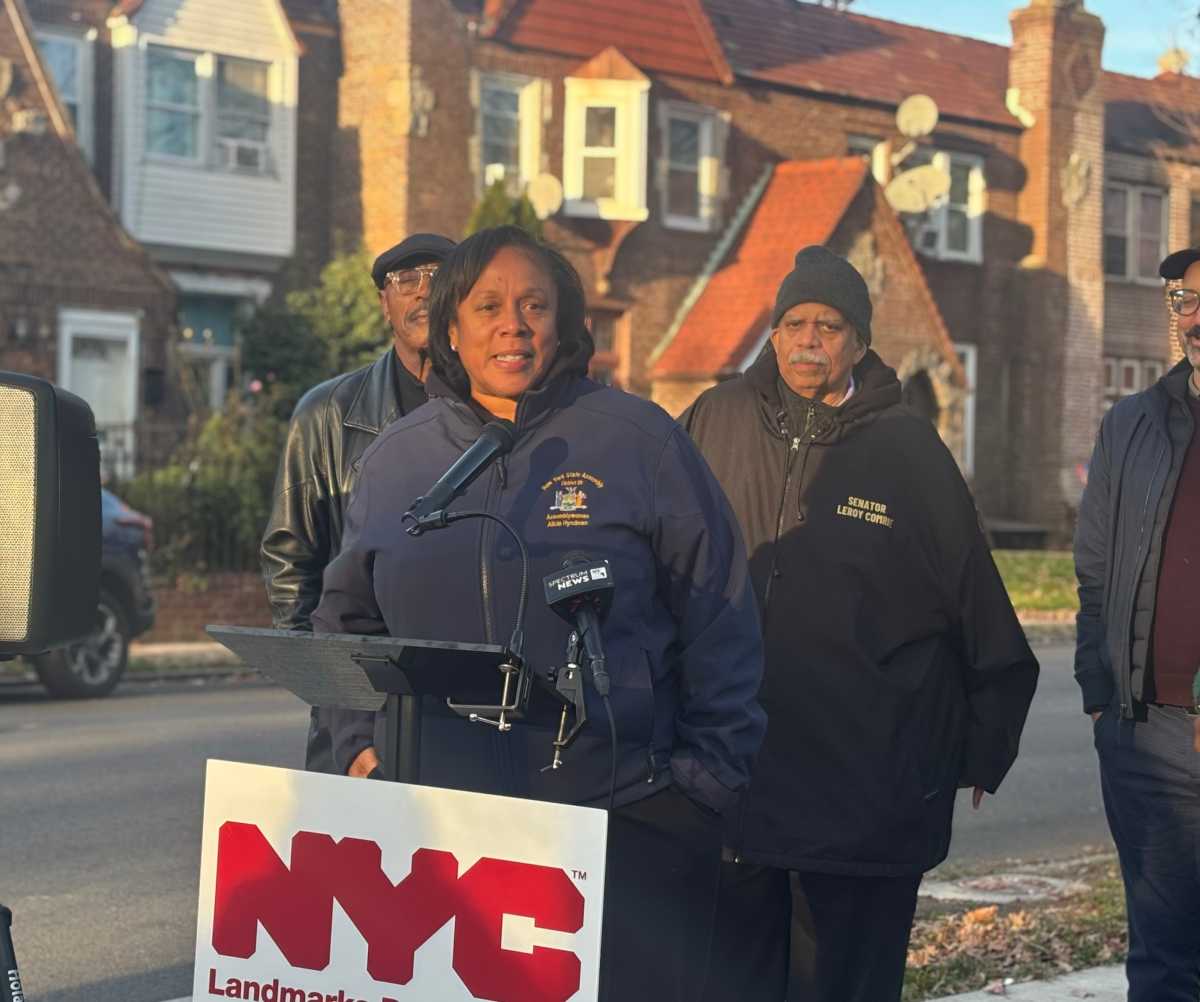
Despite the legal victory in 1948 that allowed Black families to buy homes in the community, Hyndman said these families still faced harassment and hostility. Nonetheless, she continued, the African American community stood firm and the community kept growing.
“We want to make sure this community continues to thrive,” she said. “This designation is a step in the right direction. So we have to keep doing our part… Thank you to all whose labor endeavors make sure that history does not repeat itself.”
Hyndman also credited William Scarborough, president of the civic association, for laying the necessary groundwork to preserve and continue the district’s legacy.
Scarborough, who grew up near Addisleigh Park, recalled memories of swimming in Count Basie’s pool and passing by James Brown on his doorstep while riding down Linden Boulevard in St. Albans.
“I remember all of those things,” Scarborough said. “To be part of this community now is just a tremendous source of pride for me, and I’m happy that we are here to celebrate the wonderful architecture.”
He said the Addisleigh Park Civic Association stands on the shoulders of all who came before it, and who helped make the community what it is today.
“The thing that makes this community special are the people that are here now — the ones that keep the legacy of Addislegh park,” he said. “The ones that keep the pride and maintain the houses each and every day and keep this a special place to be.”
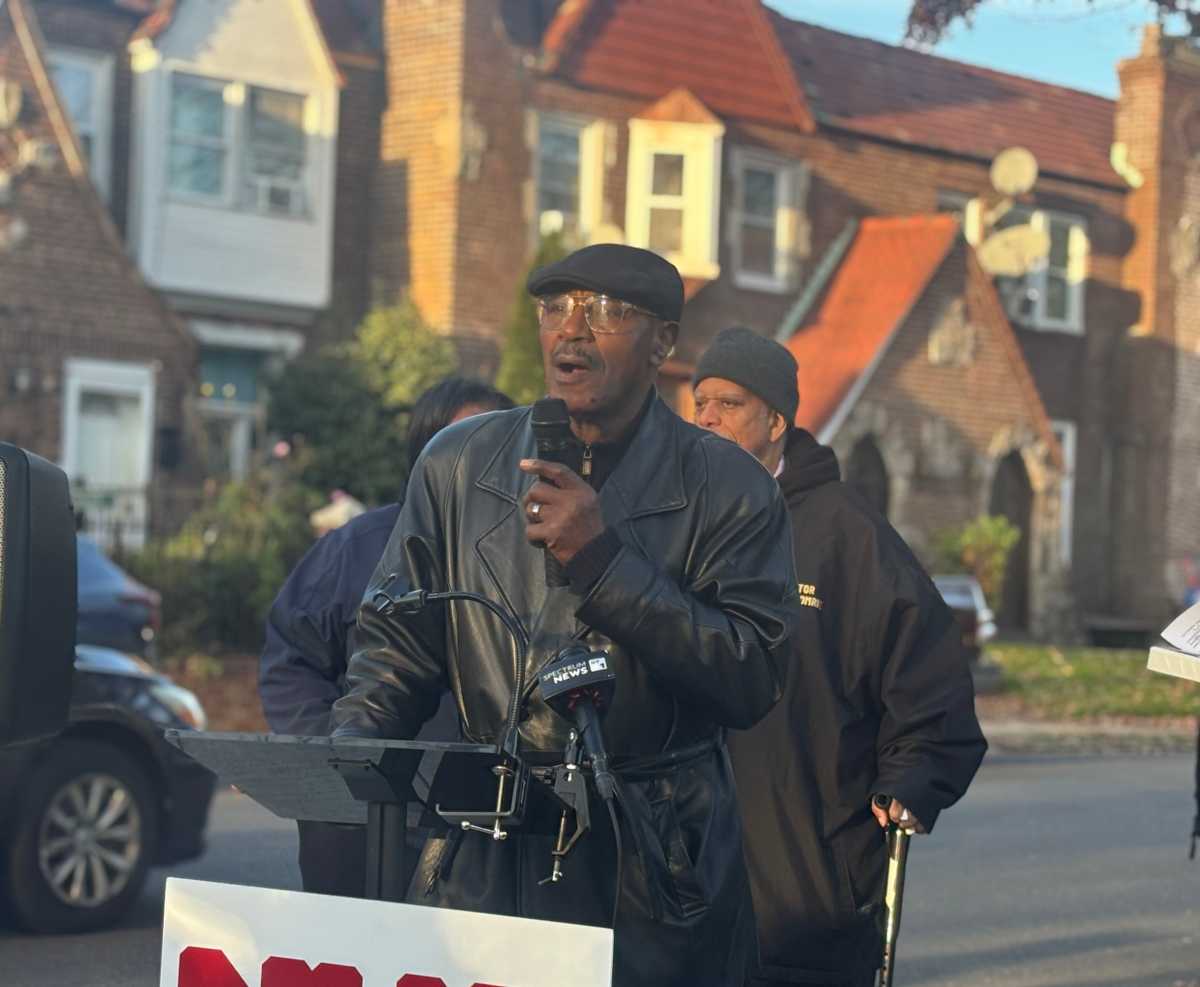
Council Member Nantasha Williams said when Addisleigh Park residents and visitors walk the community’s streets, the presence of its history can be felt — whether it be neighborly greetings, the pride residents take in their homes, or the lasting care that has been passed down from each generation that lives there.
“This community was built by people who believed in creating something lasting,” she said. “Addisleigh Park has always carried a unique story. Yes, it was home to many world-renowned artists, athletes and trailblazers, whose names many of us grew up hearing, but it was also shaped and continues to be shaped by families who built their lives here quietly and steadily. Their experiences sit alongside the many stories that make southeast Queens, each one adding to the shared history that grounds our district.”
